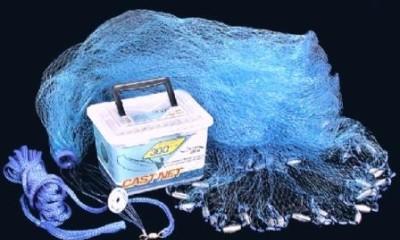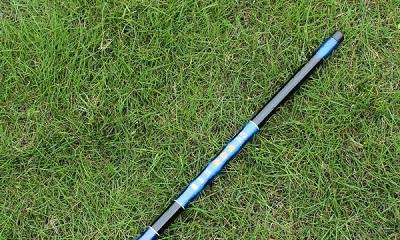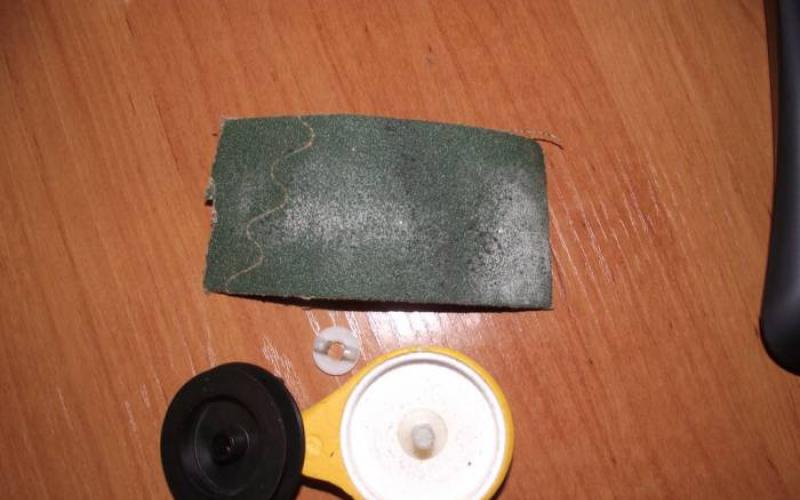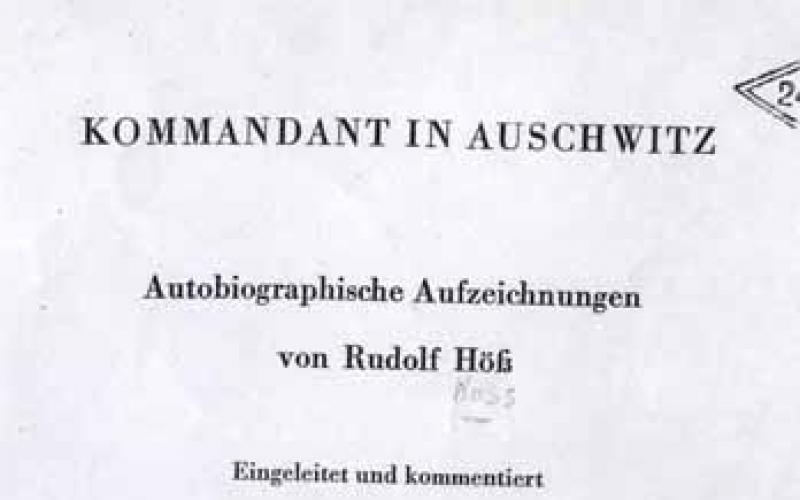The founders of the creation of toothpaste are considered to be the ancient Egyptians. In manuscripts dating from 5000-3000 B.C. BC e. her recipe is described, the main composition of which included the ashes of the insides of a bull, pumice stone and wine vinegar. The Buddha in ancient India advised to use a “wand” from the God Sakka for oral hygiene, the use of which was a ritual rite. The ancient Greeks used mixtures of ash, crushed glass, stone powder, burnt oyster shells, and wool. They rinsed their teeth with salt water from the Aegean Sea, which helps strengthen the gums. Widely used in different countries in ancient times charcoal, gypsum, cocoa beans, plant roots, resin, etc.
The period of the Middle Ages was not the most favorable for dental innovations. Only the upper class brushed their teeth. Abrasive powders and anise rinses were prepared for them. In England, since the 15th century, barbers-surgeons have treated and removed teeth. To remove tartar, they used solutions based on nitric acid, which, along with the tartar, also dissolved teeth. This was such an incredible method of cleaning these days oral cavity, which ended its existence only in the XVIII century ...
Anthony van Leeuwenhoek - Dutch naturalist, microscope designer, founder of scientific microscopy, member of the Royal Society of London (since 1680), who studied the structure of various forms of living matter with his microscopes. In 1674, he discovered the world of microbes and a way to destroy it by rubbing the teeth with a cloth with salt. Once, after such a procedure, under a microscope invented by himself, he found worms infested on a rag. Wiping his teeth with a cloth with salt, he found no microbes.
In Russia, even in the most remote corners, they brushed their teeth with birch charcoal, refreshed their mouths by chewing a mint leaf (fresh - in summer, dried - in winter), which has both a pleasant aroma and antibacterial properties. In the northern regions, mint was often replaced by conifers: cedar, larch, fir.
A huge contribution to the field of dentistry was made by the famous Parisian dentist Pierre Fauchard, who treated the teeth of Louis XV and the Marquis de Pompadour, Jean Jacques Rousseau. In 1723, Fauchard wrote the book Dentist Surgeon, in which he described about 130 diseases of the teeth and diseases of the oral cavity, their causes and treatment features, as well as many devices and mechanisms for dental prosthetics. He advised brushing your teeth daily from food debris with a sea sponge.
At the end of the 18th century, tooth powder first appeared in Great Britain. The composition of the powder included brick dust, crushed porcelain and clay fragments. Glycerin was added to tooth powders to give it a more pleasant taste. Later, the composition of the powders was changed to charcoal powder, crushed bark, and flavorings such as strawberry extract. Borax powder was used as a foaming agent.
1824 - the appearance of tooth soap. It consisted of chalk, neutral soap and peppermint oil.
In the 1850s, John Harris proposed the use of chalk to make tooth powders. Crushed medicinal herbs, fruits or flowers (sage, violet, cinnamon, etc.) were added to the chalk for a pleasant taste.
Since the second half of the 19th century, work began on the creation of toothpastes. The finest chalk powder was evenly distributed in the jelly-like mass. First, starch was used as a binder, from which a special paste was prepared on an aqueous solution of glycerin. Later, the starch was replaced with a sodium salt of an organic acid, which stabilized the chalk suspension.
Before World War II, most toothpastes contained soap. Chemical technology developed and soap was gradually replaced by sodium lauryl sulfate and sodium ricinoleate.
The first toothpaste that cleans teeth from plaque and freshens breath appeared at the beginning of the 20th century. It contained a therapeutic and prophylactic additive - the enzyme pepsin, which contributed to teeth whitening and plaque dissolution. In the 1950s, the production of toothpastes with fluorine compounds began. Such pastes help to strengthen the enamel. In 1956, Proctor & Gamble introduced the first fluorinated toothpaste with anticarious action.
In the 70s and 80s, fluorinated toothpastes began to be enriched with soluble calcium salts, which strengthen tooth tissues. And in 1987, the antibacterial component triclosan began to be included in toothpastes.
The first Soviet paste in a tube was released in 1950. Prior to this, pastes were sold in tin, and later in plastic jars. Toothpaste was in short supply in Soviet times. For a long time they used tooth powder, which was used not only to clean their teeth, but also to wash windows, to give shine to metal utensils.
Currently, there are a huge number of toothpastes that do not cause discomfort to the mucosa, have a therapeutic and prophylactic effect and make daily brushing a real pleasure. The modern consumer now chooses the paste that is right for him, because each of us has his own physiological characteristics. Your dentist can help you choose both toothpaste and toothbrush.
The history of toothpaste dates back to the earliest mention in an Egyptian manuscript dating back to the 4th century AD. It consisted of a mixture of powdered salt, pepper, mint leaves and iris flowers.
How did you clean your teeth in the old days?
In Indian treatises on medicine, oral hygiene products are mentioned as early as 300 BC. These were powders based on pumice with the addition of natural acids.
Persians contributed to the improvement of toothpaste. The instructions found warned against using too hard tooth powders. They recommended the use of deer antler powder, crushed snail shells, molluscs, and fired plaster. Persian oral care recipes also included honey, various dried herbs, minerals, and aromatic oils.
The Greeks used a mixture of ash, stone powder, burnt oyster shells, crushed glass and wool. For rinsing, they used salty sea water.
In Russia they mainly used birch charcoal (they didn’t grind coal into powder, it also took on the functions of a toothbrush) and mint leaves (fresh in summer, dried in winter) to give freshness to the oral cavity. Mint also has antibacterial properties. In the northern territories, mint was replaced by tree needles conifers(larch, fir or cedar) or pine and cedar resin. In addition, in Russia, people chewed the cut off upper part of the honeycombs (wax cap with honey) - zabrus.
Chewing zabrus promotes cleaning, disinfection, strengthening of teeth and gums in periodontal disease.The beneficial effect is achieved due to the location of peripheral vessels as close as possible to the surface of the gums - the penetration of useful components of honey occurs, enriching the gums with the missing microelements.
Honey mostly consists of simple monosaccharides of glucose and fructose, substances that are ready to enter directly into the bloodstream without additional processing of gastric juices. Also, honey, unlike sugar, does not irritate the gum mucosa and does not destroy tooth enamel.
In Europe brushing teeth and oral hygiene in general, only representatives of the upper class were engaged. To clean the teeth, they used abrasive powders and special anise rinses, made only for them. Since the 15th century, barber surgeons have been involved in the treatment and extraction of teeth in England. To remove tartar, they used solutions based on nitric acid, which, together with the tartar, also dissolved the teeth. This method of treatment was considered obsolete only in the 18th century!
Forerunners of toothpaste
Tooth powder and soap
In the 18th century, the first tooth powder appeared in Great Britain. The first powders consisted of overly abrasive substances (brick dust, crushed porcelain and clay chips) that were harmful to the teeth. Only wealthy people used a special brush for its application. And the poor did it with their fingers.
At the beginning of the 19th century, glycerin was added to tooth powder to give it a more pleasant taste. At the same time, strontium was introduced into the composition of the powders - to strengthen the teeth and reduce sensitivity.
The recipe for the powders was later changed to charcoal powder, crushed bark, and flavorings (strawberry extract). Sodium tetraborate (borax powder) was used as a blowing agent.
Sodium tetraborate(Sodium tetraborate, "borax", "borax" (from lat. borax)) - an inorganic compound, sodium salt of boric acid.
The substance is familiar to representatives of many professions. has a wide range of applications. Also used as food additive E-285. As a food preservative is allowed only in third world countries. AT European countries and in Russia has long been banned for use. This is due to the fact that this substance is not excreted from the human body, it tends to accumulate in tissues, turning into a toxic substance (it belongs to class 4 in terms of toxicity).The main area of application is the destruction of cockroaches.

1824 - Peabody dentist, introduced tooth soap.
It was quite easy to use, consisted of chalk, neutral soap and peppermint oil. However, it required improvements, because. hard soap destroyed the soft tissues of the gums.
1853 - Dentist John Harris suggested using chalk for making tooth powders.
To give the powders a pleasant taste, crushed fruits, medicinal herbs and flowers (cinnamon, sage, violet, etc.) were added there.
For a short time, the powders were able to satisfy the public, but due to the large size of the abrasive, they erased tooth enamel. In addition, the ability of the powder to stick together and get dirty due to contact with a toothbrush has become annoying to consumers over time.
1873 - Colgate first introduced "Dental Cream" to the American market- flavored, creamy mass in glass jar. Consumers did not immediately appreciate the novelty because of the inconvenient packaging.
The first chalk dental creams were thin chalk powder evenly distributed in a jelly-like mass. Starch mixed with an aqueous solution of glycerol was used as a gelling agent. Later, instead of starch paste, sodium salt was used, which was able to stabilize the suspension of chalk.
1892 New London, Washington Sheffield dentist invents the first toothpaste tube.
He got the idea of using a tube from an American artist who, back in the 1840s, kept his paints in tin tubes.
However, Dr. Sheffield did not think of patenting his invention. So when Colgate learned about it, they quickly adopted the packaging practice and became the owner of the rights to this invention.
1896 -Colgate has established mass production of dental cream (toothpaste) in tubes.
The advantages of tube toothpaste are hygiene, safety, and portability, making both tube and toothpaste widely accepted in America and Europe. Toothpaste has quickly become an indispensable personal care product.
Before World War II, most toothpastes contained soap. However, over time, soap began to be replaced by sodium ricinoleate and sodium lauryl sulfate.
Toothpaste
At the beginning of the 20th century, the first toothpaste appeared that could freshen breath and clean teeth from plaque. In its composition, it contained a special therapeutic and prophylactic additive - pepsin. Pepsin helped dissolve plaque and whiten teeth.
1915- eucalyptus extracts began to be introduced into the composition of toothpastes. They also began to use "natural" toothpastes containing mint, strawberries and other plant extracts.
1955- Proctor & Gamble introduced the first ever fluoridated toothpaste "Crest with Fluoristat", which has anticaries action. This was the most important discovery of the 20th century in the field of oral hygiene.
1970s- in the production of toothpastes, they began to use soluble calcium salts, which strengthen the tissues of the teeth.
1987- Macleans was the first company to include triclosan, which had an antibacterial effect, in the composition of the toothpaste.
1987. - first developed an edible toothpaste specifically for American astronauts. Such pastes are produced to this day and are intended for children. Swallowable toothpaste is ideal for children as children do not rinse their mouth well after brushing their teeth.
1989- Rembrandt invented the first whitening paste.
1995- Macleans released the first whitening toothpaste for every day - Macleans Whitening.
Today, there are a huge number of toothpastes that have a therapeutic and prophylactic effect, do not cause discomfort to the mucosa and make daily brushing a pleasure.
The evolution of toothpastes is not over! Progress and development of science allow you to take better care of your teeth and choose toothpaste according to price, taste and other features. The desire to have a snow-white smile and a pleasant breath remains unchanged at all times.
- In the USSR, the first toothpaste in a tube was released in 1950. Until 1950, pasta was sold in tin or plastic jars.
- In the USSR, toothpaste was in great short supply. Have been using toothpaste for a long time.
- For a year, a person uses 8-10 tubes of toothpaste 75 or 100 ml.
- most expensive toothpaste Theodent 300, one tube costs 100$ . According to the manufacturer, the paste is unique in that it contains the innovative substance "rennou". This substance from cocoa beans is an alternative to fluoride, it creates a second layer of durable enamel on the teeth. At the same time, it is absolutely safe.
- Today, many toothpastes with unusual flavors are produced in the world: pork, bacon, alcohol (Scotch, bourbon, champagne, etc.), chocolate, dill, eggplant, pickle, etc.
- There are collectors of tubes - tubotelists. The most fanatical tubotelist in the world is considered to be an American of Russian origin, dentist Valery Kolpakov - more than 1800 tubes in the collection. One of the most interesting exhibits of his collection is Doramund radioactive paste. Some time ago, dentists believed that radioactive elements could strengthen gum tissue.
- The most common advertising myth about toothpaste is that you can get rid of plaque in just two days. Even toothpastes with the highest content of abrasive elements will take at least a month to do this. And along with plaque, they usually get rid of tooth enamel ...
A dentist will always help you in choosing a toothpaste and a toothbrush!
It is believed that the ancient Egyptians were the pioneers in the history of the creation of toothpaste. The found manuscripts describe the recipe for its preparation (5000-3000 BC). The composition of the toothpaste was: wine vinegar, pumice and ashes obtained from the burning of the insides of a bull.
In ancient India, there was a ritual rite - the use of a "wand" from God Sakka, it was carried out to ensure oral hygiene (its use was advised by the Buddha). It is impossible to call the period of the Middle Ages favorable for the introduction of dental innovations. Teeth were brushed only by representatives of the upper class. Anise rinses and abrasive powders were made just for them.
In Russia, birch charcoal was used for brushing teeth, and to refresh the oral cavity, they chewed a mint leaf (dried in winter, fresh in summer), which has antibacterial properties and a pleasant aroma. In the regions of the North, coniferous plants were used instead of mint: fir, larch, cedar.

At the end of the 18th century, the first appearance of tooth powder was noted in Great Britain. It consisted of brick dust, clay fragments and crushed phosphorus. To make the powder taste more pleasant, glycerin was added to it. Somewhat later, the composition of the powder was completely changed, it included crushed bark, coal powder and flavorings (for example, strawberry extract). Borax powder was used as a blowing agent.

Tooth soap appeared in 1824, it contained chalk, neutral soap, and peppermint oil. In 1850, John Harris proposed to make tooth powders from chalk. For a pleasant taste, medicinal herbs, flowers or fruits (cinnamon, violet, sage and others) were added there in crushed form.
Work on the creation of toothpastes began in the second half of the 19th century. Chalk powder of the finest grinding was evenly distributed in a jelly-like mass. A special paste was first prepared from starch (as a binder) diluted with an aqueous solution of glycerin. Later, instead of it, they began to use sodium salt, which was able to stabilize the suspension of chalk.

Most pre-World War II toothpastes contained soap. Chemical technology developed, and it gradually began to be replaced by sodium ricinoleate and sodium lauryl sulfate. At the beginning of the 20th century, the appearance of the first toothpaste that could freshen breath and clean teeth from plaque was noted. It contained a special therapeutic and prophylactic additive - pepsin, which helps dissolve plaque and whiten teeth.
The manufacture of toothpastes containing fluorine compounds began in the 1950s. They helped to strengthen tooth enamel. The first ever fluoridated toothpaste with anti-caries action was introduced by Proctor & Gamble in 1956. Enrichment with soluble calcium salts of fluorinated toothpastes, to strengthen tooth tissue, began to be done in the 70-80s. And the triclosan component, which has antibacterial properties, began to be included in the composition in 1987.

The first Soviet paste in a tube was released in 1950. Previously, they were sold in tin or plastic jars. AT Soviet years toothpaste was a big shortage. Have been using toothpaste for a long time. It was used both for brushing teeth and for washing windows, as well as to give shine to metal utensils.
About who and when invented or rather invented toothpaste, we most likely will never know. But the first mentions of dental care products date back to civilization. ancient egypt. In the manuscript, which dates back to the 4th century BC, there is such an entry. It is necessary to mix the ashes of the insides of a bull, myrrh, crushed eggshells and pumice. Exactly how the mixture was used is unclear. Most likely, it was applied with fingers to the gums and teeth and rubbed. But the first mention of toothbrushes is also found in Egypt, but only a little later.
In ancient India and China, other ingredients were used as toothpaste. These are powder from crushed shells, powder from hooves and horns of animals, gypsum and various minerals crushed into crumbs.
AT Ancient Greece and Rome also used the ashes of burnt animals as a means of cleaning their teeth. But here it was also recommended for the health of the teeth to rinse the mouth with the blood of a turtle. And from a toothache in those days they used amulets or necklaces made of wolf bones. In addition, such exotic ingredients as powdered pebbles, crushed glass, and wool were used, which were saturated with honey before use.
I must say that the Europeans did not think about the health of their teeth. But the people of the East used substances such as rose oil, honey, myrrh and alum to clean their mouths. However, such use of funds was most likely not for a hygienic purpose, but for a cosmetic one. Indeed, in those days there was a fashion for smooth and white teeth, in which pieces of food should not be stuck.
In the Middle Ages, it was recommended to use goat milk or even white wine. And bad breath was eliminated with the help of incense, which was rubbed into the gums. In 1375, the Benedictine monks invented an oral elixir, but its composition was kept in the strictest confidence. It could be bought until the beginning of the 20th century.
However, in those days, teeth were cleaned from time to time, and few people understood why this was necessary. And so it went on until Anthony van Leeuwenhoek. Once, under the microscope, which he invented, he put a wash from his own teeth. And the result literally amazed him - microbes were literally teeming on the glass slide. Then he rubbed his teeth with a cloth with salt and again placed a new flush under the microscope. There were no microbes. Since then, the scientist began to brush his teeth with salt every day, and his teeth remained in excellent condition until his death.
And only at the very end of the 18th century, crushed chalk began to be used as toothpaste. But the pasta that we now know appeared in 1873. And it was introduced to the market by Colgate. However, toothpaste did not gain much popularity, and people continued to brush their teeth with toothpowder.
Gradually, the powder was replaced by toothpaste. Today, many of the most different types and with various additives, such as chlorhexidine, eucalyptus, chamomile, mint, calcium and fluorine. However, a dentist will help you choose the right toothpaste that is right for you.
The oldest mention of toothpaste is found in an ancient Egyptian papyrus and dates back to 1500 BC. Here were collected recipes for toothpastes used since 3500 BC. So, one of the described paste recipes included the following ingredients: ashes of the insides of a bull, myrrh, pounded eggshells and pumice.
In ancient China, toothpaste had a different composition: salt and musk, and several other components with strange and unpronounceable names.
The merit in the further improvement of toothpaste belongs to the ancient Greeks and Romans. The Greeks paid great attention to the physical beauty of the human body, including a beautiful snow-white smile. For brushing teeth in ancient Greece, various polishing and abrasive substances were used, such as burnt shells, corals, talc, in combination with salt or without it, rubbing them to a powder or paste and mixing the resulting substance with honey. The addition of honey to pasta was due to the Greek belief in it. magical properties. Ancient Roman literature also contains information about various cleaning and polishing agents, such as ground oysters, pearl shells, burnt stomachs, and bovine horns, mixed with aromatic additives from dried rose petals or myrrh.
In medieval Europe, the development of oral hygiene somewhat slowed down. Superstitions were very strong in Europe at that time, so the recipes for toothpastes and powders looked rather strange. For example, the most popular dentifrice was tooth powder containing bread crumbs gnawed by a mouse. Another method of cleaning teeth in the same period was a combination of cuttlefish bones, small sea shells, pumice, burnt antlers of bucks, walnut alum, mountain salt, cane and iris roots; in total, the composition had to include necessarily nine ingredients. All of them were mixed, ground into powder, placed in a linen bag and used to rub the teeth.
Tooth powder, and then toothpaste, most similar to modern ones, first appeared at the end of the 18th century in Great Britain. This dentifrice was sold in a ceramic jar as a powder or paste. Wealthy people used a special brush to apply it, while those who were poorer did it with their fingers. But despite the fact that the powders were formulated by dentists and chemists, they often contained excessively abrasive substances that could harm the teeth: brick dust, crushed porcelain and clay chips, as well as soap and chalk.
In Russia at this time, Peter I ordered the boyars to brush their teeth with crushed chalk and a damp cloth. And the people knew a different way: coals from birch wood perfectly whitened teeth. That's just the mouth to rinse after such a cleaning should be especially careful.
A new stage in the development of toothpastes occurred in the 19th century, when in 1853 John Harris proposed the use of chalk as an abrasive filler in toothpastes.
At this time, the first companies specializing in the production of oral hygiene products began to emerge. However, for a long time, pharmacists were engaged in the production of toothpastes and powders. They ground chalk into powder, and to give it a more pleasant taste, they added finely ground leaves or fruits to it. medicinal plants, such as cinnamon, sage, violet and others, later they began to be replaced by various essential oils. Powders were very popular for a long time, as they were cheap and had almost no competitors. However, tooth powders had many drawbacks. So the high abrasiveness of tooth powders led to the abrasion of tooth enamel and the appearance of their hypersensitivity to external stimuli. In addition, the powders quickly became contaminated during their use, when opened, and when they came into contact with a brush.
In the middle of the 19th century, more and more competitors began to appear in tooth powders. In the 60s, the company S.S. White released toothpowder, foldable tube toothpaste, and a hard tooth soap that consisted of precipitated chalk, coconut oil, white sugar, soap, and fragrance. And in 1873, the Colgate Company introduced flavored toothpaste in a jar to the American market. It is believed that the regular production of toothpastes in the world began in the late 70s of the 19th century in America. Tubes, similar to modern ones, appeared in the 90s of the 19th century.
In the 20th century, the development of the production of toothpastes continued. Pastes began to differ in purpose of use and other, less important characteristics, such as color, taste, smell, etc.
The process of evolution of toothpastes is far from complete - some products die off, others live for decades. Progress, the development of science constantly presents us with surprises that allow us to take better and better care of our teeth. Only one thing remains unchanged - the desire of a person to have a snow-white smile and a pleasant smell from the mouth.









